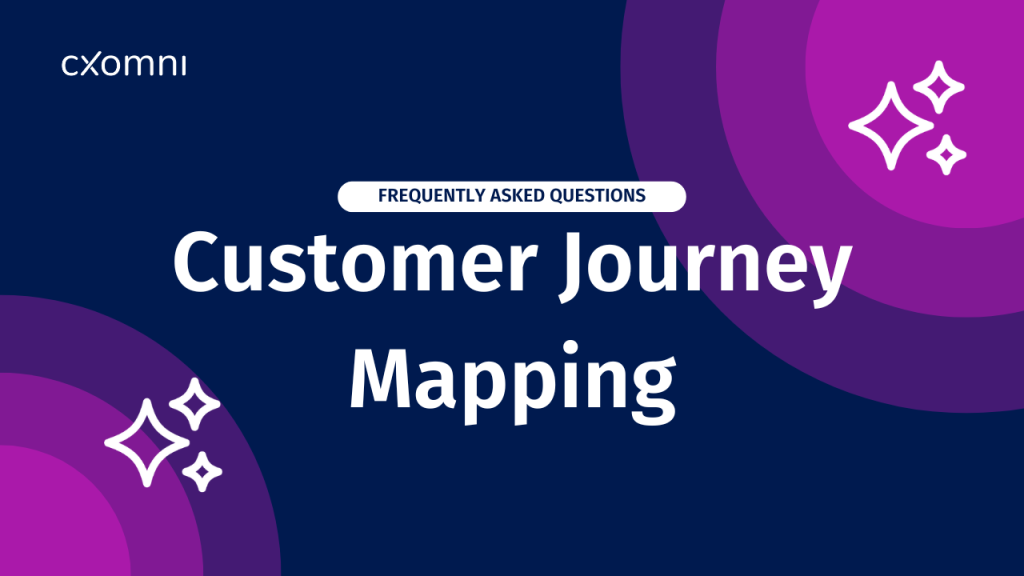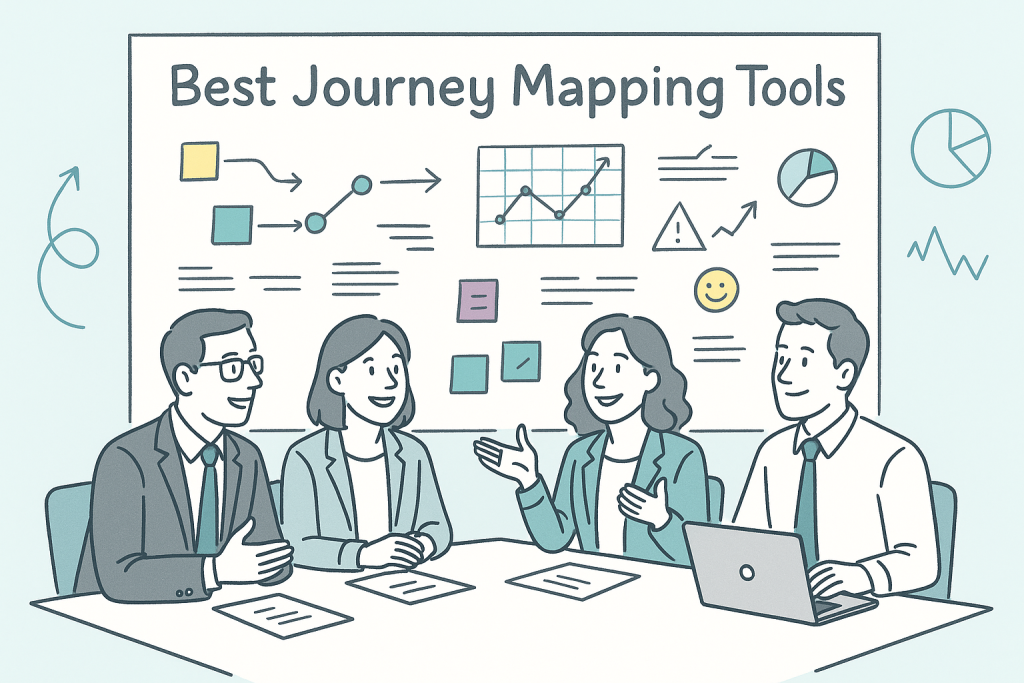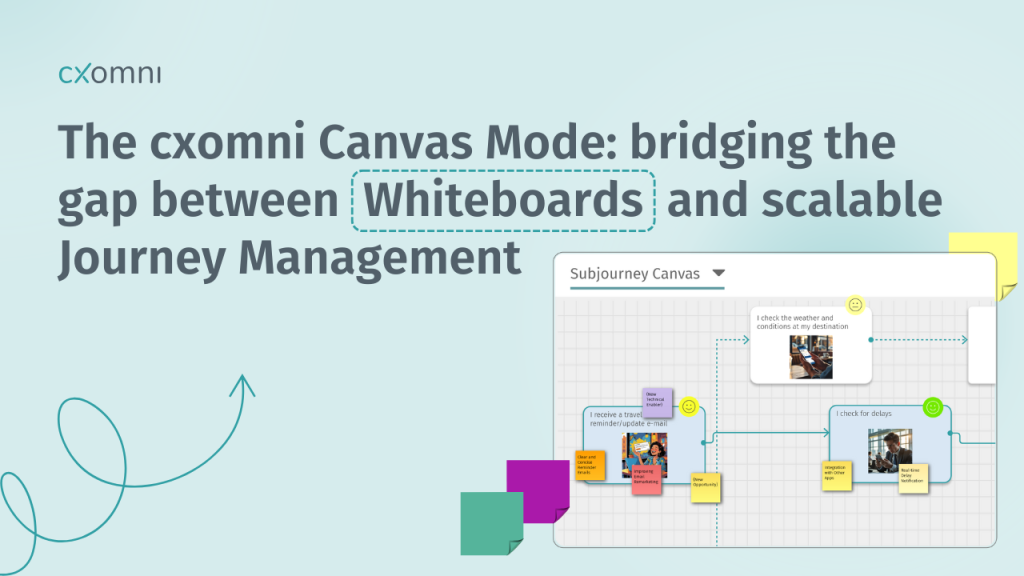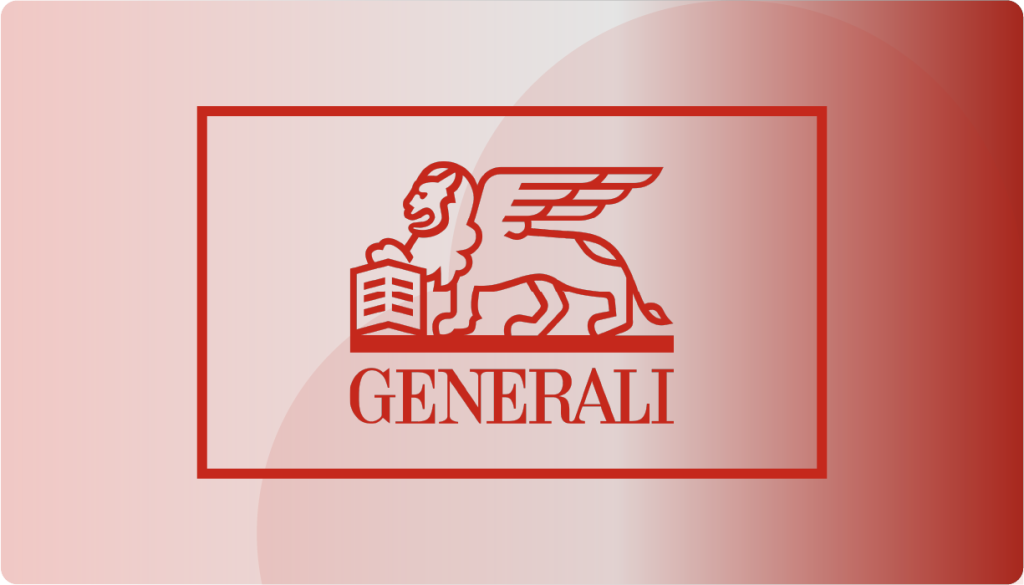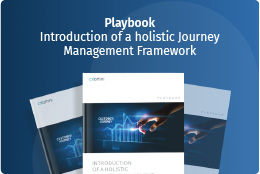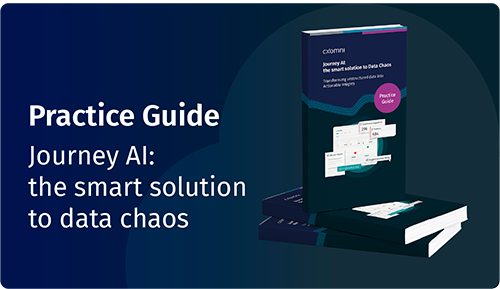Depending on a company’s maturity level, there are various approaches for working with customer journeys. These range from simple visualizations in workshops (Customer Journey Mapping) to comprehensive management approaches for the entire organization (Journey Management). In Customer Experience Management, advanced companies often are looking for a holistic approach. Their goal is to enrich their customer journeys with data from various sources to improve customer experiences in real time. But which organizations benefit from Customer Journey Mapping? And when does Journey Management become worthwhile? In this article, we take a closer look at both disciplines and provide answers.
Customer Journey Mapping as Foundation for Customer Experience Management
Let’s take a closer look on Customer Journey Mapping. This technique helps companies to understand customer needs from the very beginning and formulate internal improvement measures more precisely. Customer Journey Mapping was developed by Brian Curran and John Kembel from Oracle in collaboration with Stanford University. With their method, decision makers were able to document the customer perspective step by step on a timeline and visualize how customers interact with a company and how their experiences are. Therefore, the focus lies on customer emotions during journey phases like purchase or service.
cxomni is a leader among
Journey Mapping Platforms
The Forrester Wave™: Journey Mapping Platforms, Q2 2022
Customer Journey Mapping as a Workshop
Most companies conduct Customer Journey Mapping as a workshop. These workshops typically start with defining the target customers and their needs. First, personas are created. Then, touchpoints along the customer journey are mapped, including the first contact with the company, the purchase, and beyond.
Key aspects for a successful customer journey mapping workshop include:
- Engaging all relevant departments
- Gathering and analyzing customer data
- Considering emotional moments of customers
Special whiteboarding tools for Customer Journey Mapping workshops can digitally visualize customer journeys, personas, and emotions. However, these tools often reach their limits when dealing with complex or branched journeys. But due to their collaborative features, they are ideal for workshops that aim on developing new products or services with different teams. Customer Journey Mapping workshops are therefore the perfect first step when companies want to get started with Customer Experience Management.
Customer Journey Mapping vs. Journey Management
If companies want to fully utilize journey insights and improve customer experiences sustainably, they need more than just a snapshot. To create real value, insights must be turned into actions so that processes and services can be improved.
And this is where Customer Journey Management comes into play. By continuously reviewing and improving, Journey Management helps to increase customer loyalty and business success. Because Journey Management goes beyond merely creating customer journey maps: While journey maps are static visualizations of the customer’s interactions with a brand, Journey Management involves the ongoing monitoring, optimization, and orchestration of these journeys in real-time.
For example, Journey Management continuously tracks customer behaviors and interactions across various channels, allowing businesses to adjust their approach based on real-time data. Unlike static maps, Journey Management provides insights that evolve with customer needs.
Additionally, Journey Management is outcome-driven, focusing on optimizing KPIs like customer satisfaction (CSAT), Net Promoter Score (NPS), conversion rates, or customer lifetime value (CLV). Customer Journey Mapping, on the other hand, is more about understanding and diagnosing the customer experience without always offering clear metrics for success.
Customer Journey Management: A matter of software
To meet these requirements, Journey Management needs the right software. Because these tools mot only visualize journeys, they also allow data integrations via APIs for e.g. web analytics or customer feedback data and enable CX teams to share relevant journey insights with internal departments for implementation. The result is a workflow where journey insights have a lasting impact since companies can not only respond to customer pain points but proactively improve them.
This allows companies to benefit from journey management in several ways:
- Improving brand awareness/brand value
- Simplifying information
- Increasing perceived customer benefit
- Enhancing user experience in interactions
- Increasing conversion rates
- Raising “share-of-wallet”
- Creating emotional customer experiences
- Proactively communicating new services
- Fostering loyalty
- Stimulating recommendations
Playbook: Introduction of a holisitc Journey Management Framework
Managing CX projects holisitcally
First Steps to Journey Management
So, how can the transition to Journey Management be made? If no comprehensive transformation has begun in the company, there are three proven approaches:
- Regular touchpoint auditing: Start evaluating your touchpoints objectively at regular intervals. Capture the current state in your project teams on a regular basis and compare it with the desired goals.
- API interfaces: API’s allow you to connect your journeys with data from other systems, such as Voice-of-Customer, Net Promoter Score, market research, and web analytics. With this information, you can conduct target/actual comparisons at your touchpoints.
- Journey Dashboard: A Journey Dashboard allows you to have a 360-degree perspective from the customer’s point of view. Focus on a small number of highly relevant key figures. Enable benchmarking with best-in-class values or target values.
Conclusion: The Benefits of Customer Journey Mapping and Journey Management
Customer Journey Mapping is especially worthwhile for companies with a low maturity level allowing them to understand their customers’ touchpoints and interactions at different stages. With Customer Journey Mapping organizations identify pain points and improvements for a better customer experience. Even though Journey Mapping is a static approach, it can still be used to initiate short-term improvements.
Customer Journey Management on the other hand is suitable for companies aiming for long-term optimization where a journey culture is already established, or Customer Experience Management is supported by the company leadership. However, implementing the right software is crucial here. Tools should incorporate real-time data and the possibility to share insights within the company so that the journey management strategy can be adjusted. Once these conditions are met, companies can proactively respond to changes in customer behavior and continuously adapt the experience to meet the needs of their target audience.

Robert Horndasch
CEO


